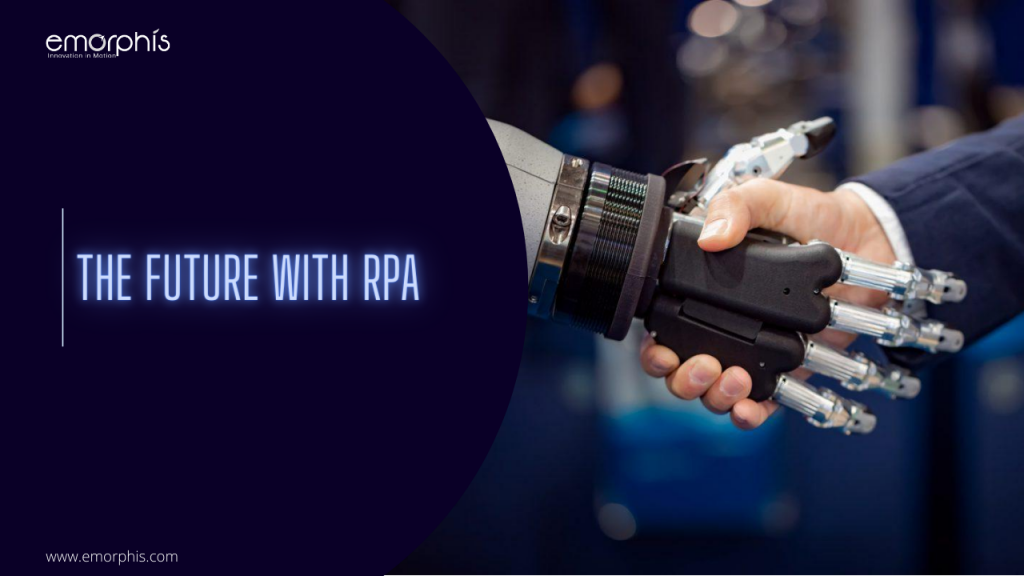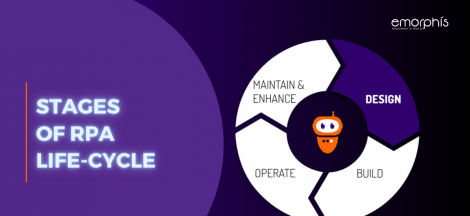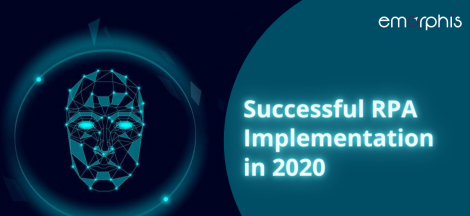Introduction
Robotic Process Automation (RPA) is changing the functioning of the business enterprises by streamlining all the low-level tasks precisely. RPA bots have the power to automate various rule-based, repetitive, and laborious tasks with great ease. So, no need for a mouse and keyboard! All the tasks such as viewing emails and attachments and analyzing statistics in social media are under the scanner of RPA software.
For the past few years, it has been advancing in each industry that has made the traditional system look somewhat redundant. Starting as a user-focused domain, it soon becomes more business-critical that resulted in emerging of more develop-oriented tools. Moreover, with the help of its notable features, companies can use their resources to enhance their decision-making ability to make precise judgments for high creativity.
As per the reports of Forrester, the RPA market will achieve great success in 2021 by generating a profit of $2.9B. Experts working in the automation industry have revealed that the future of RPA is not as diminishing as what many businessmen have shown in their concern.
Rather, it will expand in different domains and industries such as manufacturing, aviation, retail, legal, oil and gas, and many more. What’s more, a set of protocols governing the computer-aided processes will be managed effectively by RPA.
So, what does RPA holds for the future?
We’re just seeing the propagation of the 4th industrial wave. The unlocking of the next level of automation depends on the collaboration of AI with ML to deploy RPA service solutions judiciously.
Therefore, some questions pop-up in the mind of the management:
- What they can expect from the recent development in the RPA technologies?
- What are its future prospects?
- How companies will deploy it in the coming future?
- How it will reshape numerous industries worldwide?
By keeping all the above-given questions in the mind, it is time to explore more about the future of the Robotic Process Automation software and see which are the factors that will define the better prospect of the given automation tool.
I. The emergence of Smart Process Automation (SPA)
Don’t get confused by the term SPA. It is nothing but an extension of the given automation tool, i.e. RPA. The main purpose of the given RPA extension is to automate the unstructured data work that has been still difficult to manage by RPA bot.
Still unable to get through what it means? Then understand it:
Earlier, RPA was used only to automate the structured data that comes with a pre-defined set of rules. Nevertheless, there has been a significant advancement in the given technology that has allowed easy integration of RPA solution with ML.
What does it signify? It illustrates that SPA bots now can become an alternative to RPA that will work on the principle of ‘If-Then’ rules.
In nutshell, RPA bots will get immense benefit from the SPA as it will come with complete automation combo-including big data, ML, AI, and many more.
II. Near Elimination of Paper-Work
Enterprise RPA can be considered as a data-driven automation procedure that assists companies to focus on proper management of the repetitive activities, and time-consuming activities that have been forte of the humans since time eternal.
As there is continuous maturing of the automation system, RPA bots (or digital workforce) have great potential to reskill the human resources and arm them with technology more effectively and efficiently.
Various reports have revealed that by the year 2025, there will be flooding of the business market with automation that will come with easy-to-deploy RPA models. Now, what are their uses? Their most important aspect is that they will come with pre-built functionalities that will eliminate the need for paper-work and make the whole process easier for an enterprise.
An eco-friendly concept that will dominate the future! Isn’t it?
III. Effective Integration of RPA with other Tools
In the future, it will become more common when RPA and other automation tools work together to enhance the business prospects of an enterprise. The reason is that many experts have realized that RPA functions best in integration with other tools so to get most out of them.
So, saying that getting great results purely from RPA is not enough is false. RPA also helps in achieving a result, but to expand it in other areas, the need for other tools is imminent. Although RPA is one big and powerful tool, yet it offers the best result when combined with other tools.
So, in the upcoming years, RPA will get collaborated with other tools to create a more robust ‘total workforce.’ Not only it will produce the best offering to the customers, but it will also help them to achieve their targets precisely. That’s true, keep my word!
IV. Rise & Rise of Digital Workforce
Due to the ongoing pandemic, the future of working in the office looks uncertain. No need to worry as digital employees in the form of bots is here to stay. They are proficient enough to bring significant changes in the working pattern of the companies in the most unexpected manner.
While repetitive tasks will be taken care of by RPA, the software bots will enhance security, scalability, and provide firms access to cognitive services. The given bots will take over the tedious work of the human workers and allow them to focus on other work, and thus add value to the strategic tasks.
There are enormous benefits of digital workers. First, they will help RPA to eliminate errors and will bring significant changes in the way of interacting with the customers. Second, they will help in enhancing customer experience by improving compliance and reduction in costs.
V. RPA 2.0: The Next Big Change
What is RPA 2.0? It is nothing but an amalgamation of digital employees (bots in this case), ML, AI, and remote workplace. All the given aspects make a perfect recipe for the ideal formation of RPA 2.0.
In the present situation, most of the companies have been compelled to allow their employees to work from home due to the ongoing COVID-19 crisis. Nevertheless, it has become a catalyst in increasing remote working moments and only those companies that have RPA software tools can succeed in the future.
They will help management to bring a significant contribution to the creativity, innovation, and collaboration in the business. So, the integration of all the communication tools that are being used by the employees, there will be a significant breakdown of communication barriers that will promote high productivity and efficiency.
Closing Words
According to various research works, more than half of the work will be automated in the future. Besides, the ongoing pandemic is moving it more towards reality. We are entering a new era, where gaining valuable insights to getting access to synthesizing data, all will be possible through the given automation system.
So, one thing is clear-RPA software is not a choice, but a necessity to endure during the current pandemic and be ready to face the heat in the future successfully. Thus, there is a good indication that the future belongs to RPA and it looks very promising.







